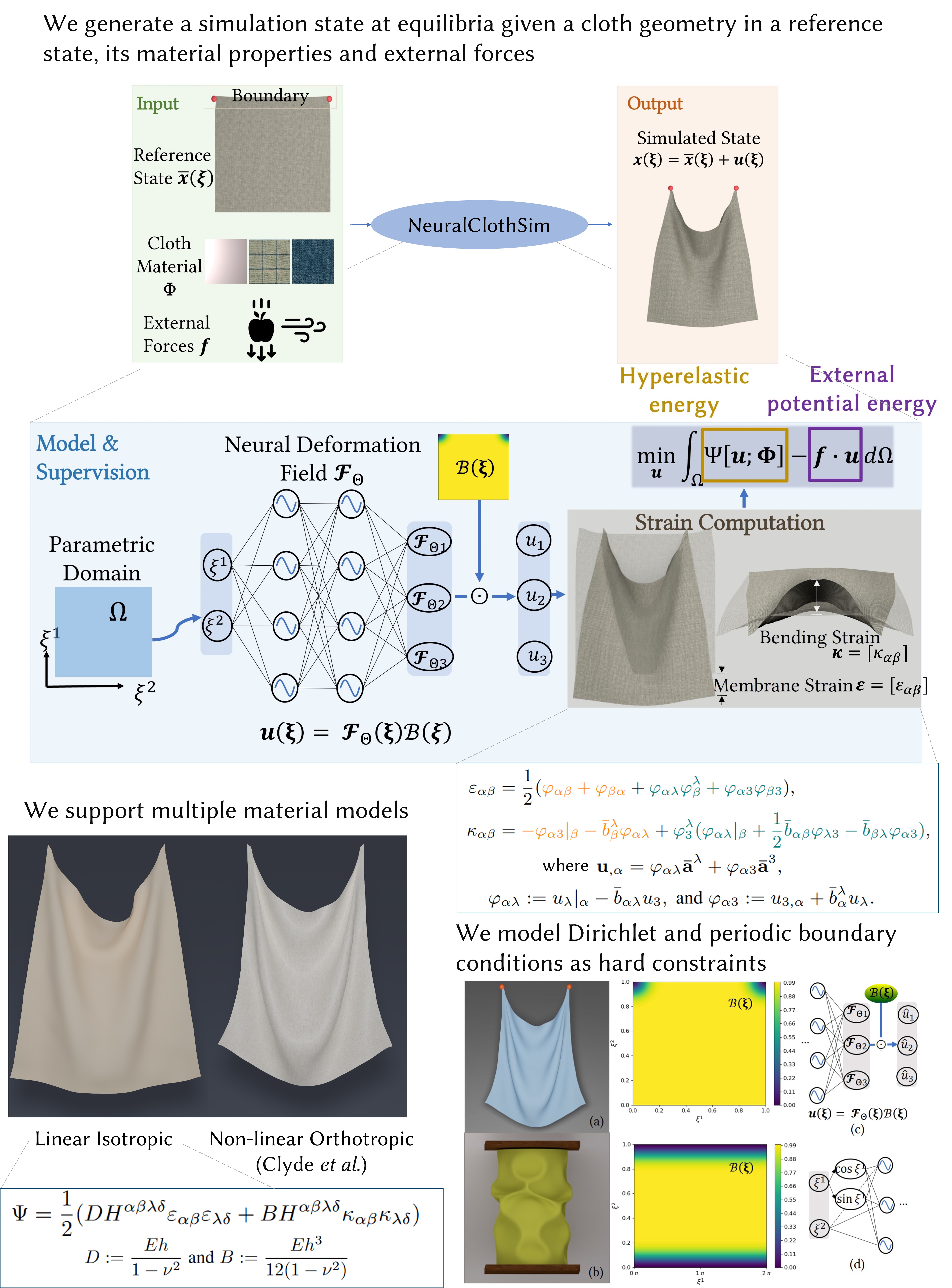Despite existing 3D cloth simulators producing realistic results, they predominantly operate on discrete surface representations (e.g. points and meshes) with a fixed spatial resolution, which often leads to large memory consumption and resolution-dependent simulations. Moreover, back-propagating gradients through the existing solvers is difficult, and they hence cannot be easily integrated into modern neural architectures. In response, this paper re-thinks physically plausible cloth simulation: We propose NeuralClothSim, i.e., a new quasistatic cloth simulator using thin shells, in which surface deformation is encoded in neural network weights in the form of a neural field. Our memory-efficient solver operates on a new continuous coordinate-based surface representation called neural deformation fields (NDFs); it supervises NDF equilibria with the laws of the non-linear Kirchhoff-Love shell theory with a non-linear anisotropic material model. NDFs are adaptive: They 1) allocate their capacity to the deformation details and 2) allow surface state queries at arbitrary spatial resolutions without re-training. We show how to train NeuralClothSim while imposing hard boundary conditions and demonstrate multiple applications, such as material interpolation and simulation editing. The experimental results highlight the effectiveness of our continuous neural formulation.

NeuralClothSim models clothes as continuous surfaces and generates realistic cloth simulations relying on the thin shell theory.
NeuralClothSim can incorporate learnt priors such as material properties that can be edited at test time.
Editing, i.e., fine-tuning a pre-trained NDF with updated design parameters is faster and offers querying of physically-plausible intermediate simulations.
NeuralClothSim generates consistent simulations (e.g., folds and wrinkles) at different discretisations of the initial state and at multiple spatial resolutions.
@inproceedings{kair2024neuralclothsim,
title={NeuralClothSim: Neural Deformation Fields Meet the Thin Shell Theory},
author={Navami Kairanda and Marc Habermann and Christian Theobalt and Vladislav Golyanik},
booktitle = {Neural Information Processing Systems (NeurIPS)},
year={2024}
}